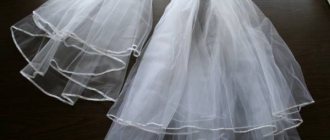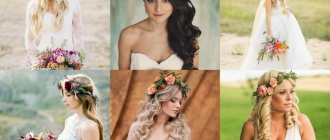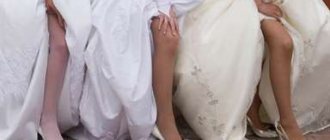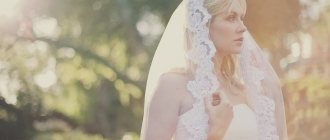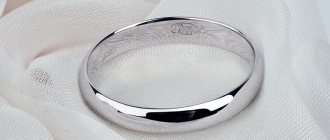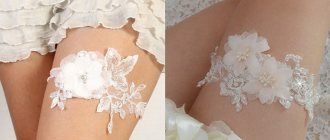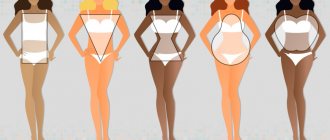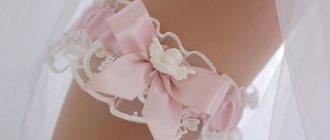A wedding veil is one of the most important wedding attributes and accessories for a bride’s wedding look. For many years and even centuries, it has been an integral element of wedding attire. During this time, not only its appearance changed, but also its symbolism. One of her first roles (around IV AD) was to protect the bride from the influence of demons and their temptations. Today, the veil has become a conventional symbol of virginity and purity, a beautiful decoration devoid of mysticism. But choosing the right wedding veil can be a difficult task. So, how to choose a veil to suit the style, appearance and figure of the bride? We have prepared a set of recommendations that will help you answer this question without any problems.
How to choose the type of wedding veil
As you begin your search for the perfect veil, you should consider the style you choose for yourself. Are you planning a wedding in a romantic style, or a more free, Hollywood style, or maybe in a rural area?
A classic dress is suited to a long veil, while a modern dress is suited to a veil of a fashionable, extravagant cut. An equally important criterion when choosing a veil is the cut and style of the wedding dress, as well as its characteristic details. For example, if the dress has a cutout at the back, the neckline should not be covered with a long veil.
Another important issue is the bride’s figure. A well-chosen veil can help disguise some of your figure's imperfections while highlighting your best features.
Yes, indeed, the types of wedding veils vary greatly. Made of lace (for example, a Spanish “mantilla” with a comb in the hair), chiffon, organza. The types of veils also depend on the decorations and style used. A simple veil, decorated with rhinestones, beads, with lace edging or asymmetrical. One of the most important criteria in different types of wedding veils is length. And here we have a large field of activity: for example, a short veil with a veil, called a “blasher”, a veil to the elbows, to the waist, a classic veil that reaches the fingertips, as well as a “cathedral” veil, the length of which can reach three meters.
How to choose a veil based on fabric quality?
Previously, veils were mainly made from expensive fabrics, but now they most often use a special mesh - tulle. The level of rigidity and the ability of the veil to keep its shape depend on the size of the mesh cells.
The rigid mesh gives the veil a solemn look and prevents it from hanging sadly and shapelessly at the back.
The soft mesh will gently flow in the wind and is ideal for a two-layer veil that hides the face.
A lace veil looks very beautiful with a silk dress.
In photographs, a veil made of light, flowing fabric looks better than one made of dense material.
General tips for choosing a wedding veil
Just as with all other elements of a bride's outfit, fitting for a veil is very important. It's better not to buy by eye.
The color of the veil should be the same as the color of the wedding dress - it is impossible, for example, for the dress to be white and the veil to be ivory.
For a princess-style wedding dress, it is best to choose a short veil, but the most versatile veil, suitable for almost all types and styles of wedding dresses, is an elbow-length veil. You can choose an elbow-length veil if you are not entirely sure which length will be most acceptable in our case.
A lace veil goes well with silk dresses.
The veil should not overshadow the wedding dress and make a greater impression than the wedding dress itself.
A satin veil looks best with a satin dress.
The low-cut veil allows you to get a good look at your hairstyle. The veil should be secured under combed hair.
A little hairstyle above the veil visually adds a few centimeters to shorter brides.
One more note - be sure to remember that you should never iron the veil, as this can destroy it. It’s better to hang it on the back of the chair and let it hang freely for two weeks before the planned wedding date. This way we will get rid of unwanted folds.
How to choose a veil by color and finish?
The veil does not have to be white, as long as it matches the tone of the dress.
Do not buy an ivory veil for a white dress. At first glance, the difference will not be noticeable, but in photographs the contrast will appear.
The edge of the veil can be finished with satin ribbon, beads, fishing line, lace or even artificial pearls. The finishing elements of the dress should be repeated in the finishing of the veil.
The same embroidered veil matches the embroidered dress. If the dress is trimmed with pearls, you need to choose a veil decorated with pearls.
However, in any case, there should be slightly less jewelry on the veil than on the dress.
If you choose a veil with embroidery, then the ornament should match the patterns of the dress as closely as possible. The pattern of the veil should not interrupt the beauty of the dress's finishing; it should be a little more modest.
Often along the edge of the veil there is an edging with a ribbon, thin or very noticeable. Choose this veil carefully. A horizontal line will divide the figure into two halves. On short girls this may not look very attractive.
The curly veil has a stiff satin edge with fishing line. She looks gorgeous and playful in the photo. The length of a curly veil can be any, within the limits of height, but the length “to the tips of the fingers” suits it best.
A lace veil emphasizes innocence and tenderness, but you can’t overdo it here. A veil made of solid lace is suitable only for a modest, smooth dress.
Wedding veil and bride's figure
One of the factors that a bride should be guided by when choosing a wedding veil is the advantages and disadvantages of her own figure. For example, wide hips look flattering with a veil that ends just at or slightly below the hip line, as well as with an ornate veil. For petite brides, a short veil is suitable - it does not shorten the silhouette. To hide the width of your shoulders, choose a veil that ends in front of them or slightly behind the line. The rule is always the same - if we want to hide what is our weak side, the veil should end exactly in this place. But these are just general recommendations; now let’s look at the issue of length in more detail.
Veil and face shape
It is also important to take into account your body shape and face type. The following tips will help you make the best choice:
- a round face needs to be made “slimmer”. A veil covering the face along the cheek line will make it visually more elongated. It is advisable to choose a shoulder length made of thick fabric, with volume at the top of the head. At the same time, you should avoid lush options that create a lot of volume on the sides;
- a square face needs to be softened. It is worth paying attention to the length of the veil, at least to the shoulders with a small amount of volume on top. A round or cascading model will look good. A voluminous hairstyle in combination with a veil made of light, soft material will help smooth out clear cheekbones;
- An oval face allows you to choose different types of veils. This face shape is well balanced and allows you to experiment with different veil styles. However, you should not create excessive volume on top or on the sides;
- rectangular face. A veil is chosen that creates additional volume around the face, but does not enlarge the upper part of the head;
- long face. A lush wide veil, which is located around the face, will visually expand the bride’s face.
How to choose the length of a wedding veil?
Short veil - a very practical veil about fifty centimeters long, often with a veil that covers the face, ideal for long dresses, for retro dresses, stylized in the 50s, for dresses with a simple cut or very flared, emphasizing the waist; Also, such a veil has proven itself on women with short hair.
A medium length veil - approximately 60-70 cm, reaching the chest in front and the belt in the back, is valued due to the fact that it suits most wedding dresses and looks exceptionally well with richly decorated dresses.
A waist-length veil is recommended for brides who prefer classic or A-shaped dresses. You can choose single-layer, multi-layer, with a diadem or with a tiara.
Long veil - has a length of 90-100 cm and reaches the hip line. This is perhaps the most popular length. This veil is suitable for both dresses with rich decorations and the most modest models, although with one caveat - it is better not to combine it with dresses up to mid-calf or 7/8 length, since such a combination visually reduces the length of the silhouette.
An almost floor-length veil - the key word here is “almost” - is recommended for tall women; it looks very flattering in combination with a mermaid dress.
“Church” veil (dress with a train) - here we come to a veil that goes perfectly with wedding dresses that have a train, but do not forget that the veil should be slightly longer than the train.
The cathedral veil has the longest length. This type of veil can often be seen while watching royal weddings on air. The longest ones even reach several tens of meters and majestically stretch behind the bride.
How to choose the style and length of the veil?
The veil can be of very different sizes.
“Cathedral” is a very long veil, flowing like a train along the floor. This style is suitable for a wedding. A cathedral veil matches a dress with a train. Usually its length is no more than 3.5 meters.
However, one Siberian wedding agency decided to become famous throughout the country and, at its own expense, sewed a veil 2 km long for the bride. First, they began to unwind the veil for a long time in the city square, then the bride and groom walked around the opera house three times, and the veil was rolled up again.
And this is what a bride's veil from China looks like. The length of the veil is 200 meters.
“Chapel” is a slightly shorter option, but also longer than the dress, at least 15 cm.
“Waltz” - the veil is level with the hem of the dress, exactly the height of the bride. Suitable for floor-length dresses without a train. These types of veils came to us from Europe.
Shorter options are used more often.
“To the tips of the fingers” - the veil reaches the tips of the fingers of freely lowered hands. A very common option. Suitable for any dress except short dresses and ankle-length dresses.
“Elbow-length” - an elbow-length veil fits any outfit.
“Shoulder-length” - also suitable for many styles of wedding dresses, but looks best with short models and with “Princess” style dresses that have a corset and a full skirt.
The last three styles are selected according to the height of the bride, so the veil will not split the figure into pieces.
A “cascading” veil consists of several layers that vary in length. This veil looks good on a high hairstyle. A medium-length cascading veil allows you to visually elongate your figure.
A multi-layered veil can be quite heavy. While you are holding it in your hands, it may seem light, but as soon as it is on your head, the hairstyle may fall apart under its weight. Ask your hairdresser to tighten the veil and don’t even be shy about tugging on it.
How to replace a wedding veil?
Not every woman dreamed from childhood that the main element of her dress would be a long snow-white veil... and, in principle, a veil in general. Often ladies want to go for a more traditional look, but sometimes they are ready for something more extravagant and are looking for alternative head decorations that can replace the classic veil. What to do in this case? Fortunately, wedding fashion designers have long begun to take this kind of demand into account, so brides have a fairly wide choice at their disposal. Having abandoned the wedding veil, you can choose one of the following accessories:
- hat with small or large brim
- tiara - gives the look of a princess, suitable for traditionally cut dresses
- comb, hairpins - their main advantage is that they are suitable for all types and styles of wedding dresses, while helping to create a complex hairstyle
- flower decorations - fresh flowers help create a delicate and romantic look; they can be pinned into either loose hair or a bun.
As you can see, there are many tips for choosing the perfect veil. But remember one thing and the most important thing - first of all, on your wedding day you should feel comfortable. And be guided by this feeling of comfort and convenience first of all when choosing a wedding dress and accessories. Even the most beautiful veil, perfectly adjusted in length, will not bring anything good if something in it bothers you.
(
2 ratings, average: 5.00 out of 5)
Mermaid
- • With a spectacular skirt that diverges from the knees, the “Waltz” veil will look beautiful (its length is 140 cm and it slightly touches the floor). She doesn’t overload the look and looks great with dresses without a train.
- • A dress model with a floor-length skirt will look good in combination with a cascading veil train, which will add elegance to this slightly playful look.
Trends in bride's accessories from the catwalks of Bridal Fashion Week 2016
